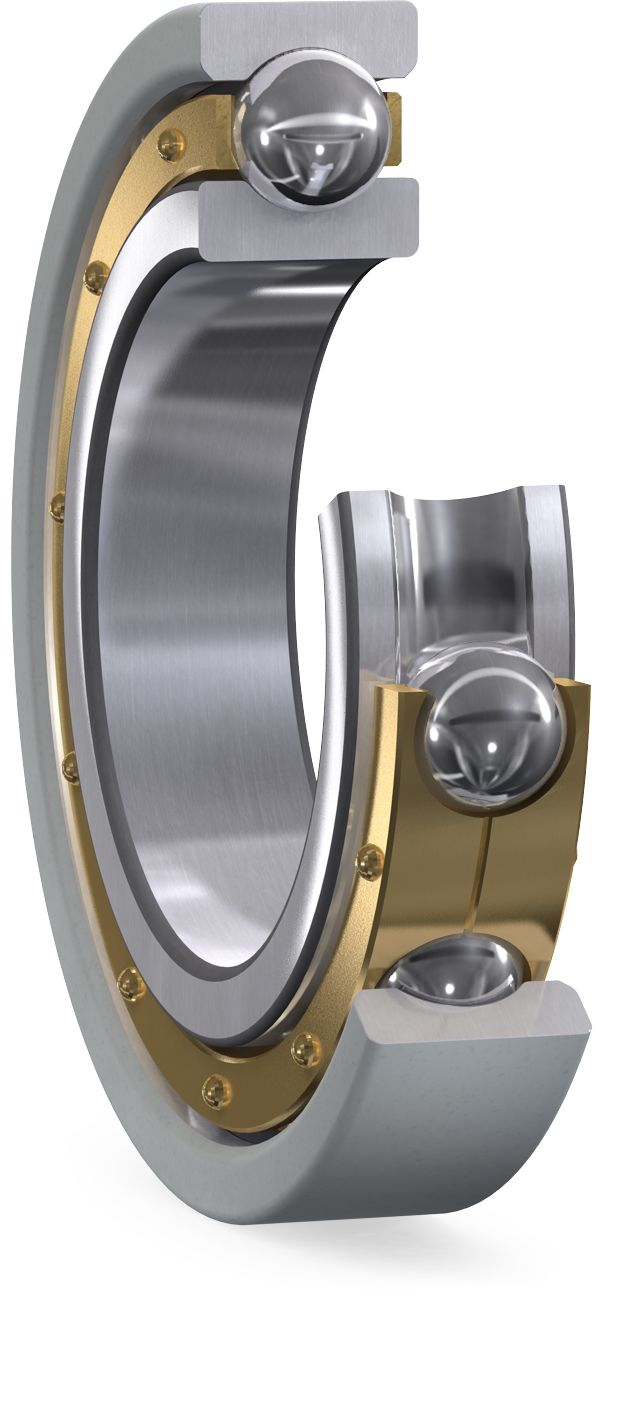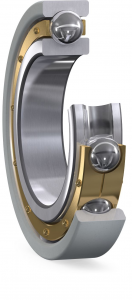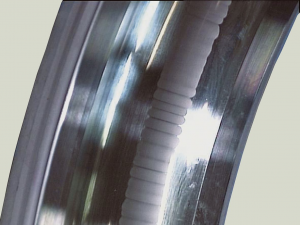
What’s Up Doug? Prevention of electrical damage in variable frequency drive motors
March 17, 2017 | By Douglas J. Martin

 When I first joined the industry in 1987, bearing damage from current leakage was rarely seen. I can still remember who the first person was that showed me the first case of current leakage – and that was about 1996 despite hearing about it since I joined bearing industry.
When I first joined the industry in 1987, bearing damage from current leakage was rarely seen. I can still remember who the first person was that showed me the first case of current leakage – and that was about 1996 despite hearing about it since I joined bearing industry.
Variable Frequency Drive (VFD) motors have been adapted to replace a motor + gearbox or a motor + belt drive. The problem is that a VFD motor induces a voltage between the rotating assembly and the static housing of the electric motor. This difference creates a low-voltage current across the rolling element bearings. Over time, this low voltage current causes damage to the bearing that causes the current passes to through it.

Figure 1
The pattern typically looks something like figure 1.
The bearing industry has come up with two solutions to the problem of a current passing across a bearing. One is to coat a ring surface with a ceramic coating and the other is to use a ceramic rolling element (hybrid bearing).
What is the difference?
The coating used on either the bearing bore or the bearing outer diameter surface is an aluminum-oxide ceramic coating with a thickness of about 110 um whereas a hybrid bearing uses rolling elements of silicon nitride. In both cases, the bearings retain the standard ISO dimensions of standard bearings so they are able to drop into the application.
How does it affect performance?
The coated bearings utilize the same rings and rolling elements as standard bearings, so there is no difference in performance – other than the prevention of low-voltage current passing through the bearing. A ceramic-coated bearing may run warmer as the heat transfer characteristics are different and the heat dissipation is not the same. While I have not experienced this, it is possible. Bearing manufacturers have been using the ceramic coatings for over 30 years.
Since the surface properties of ceramic on steel are better in terms of rolling contact, a hybrid bearing should provide greater service life especially in cases of marginal lubrication. Ceramic rolling elements are 60 per cent lighter compared to steel. This results in lower centrifugal forces and lower load on the raceway at high speeds.
Do these bearings “fix” the problem?
No. A hybrid bearing or insulated bearing does not prevent the voltage from being created. They simply prevent the current from passing through the bearing. If the bearings are hybrids/insulated, then the current will look for the next component to pass through. In a few cases I have seen the bearings in the driven component such as a gearbox or pump suffer from current damage that was passed on from the VFD motor.
In fact, you cannot really fix the problem; you need to mitigate the damage to the components by either making an electrical connection between the shaft and housing or by providing an insulating barrier to stop the current flow through critical components.
What is the “best” solution?
Hybrid bearings. They provide a greater resistance to current flow and they provide greater bearing performance. The drawback is the availability. Not all ball bearing sizes are made with ceramic balls, however, they are many sizes currently available. In terms of hybrid cylindrical roller bearings, the production of ceramic cylindrical rollers is still in the early stages of mass production and is less available than deep-groove ball bearings.
Douglas J. Martin is a heavy-duty machinery engineer based in Vancouver. He specializes in the design of rotating equipment, failure analysis and lubrication. Reach him by email at mro.whats.up.doug@gmail.com. His column appears in every issue of Machinery and Equipment MRO magazine.
